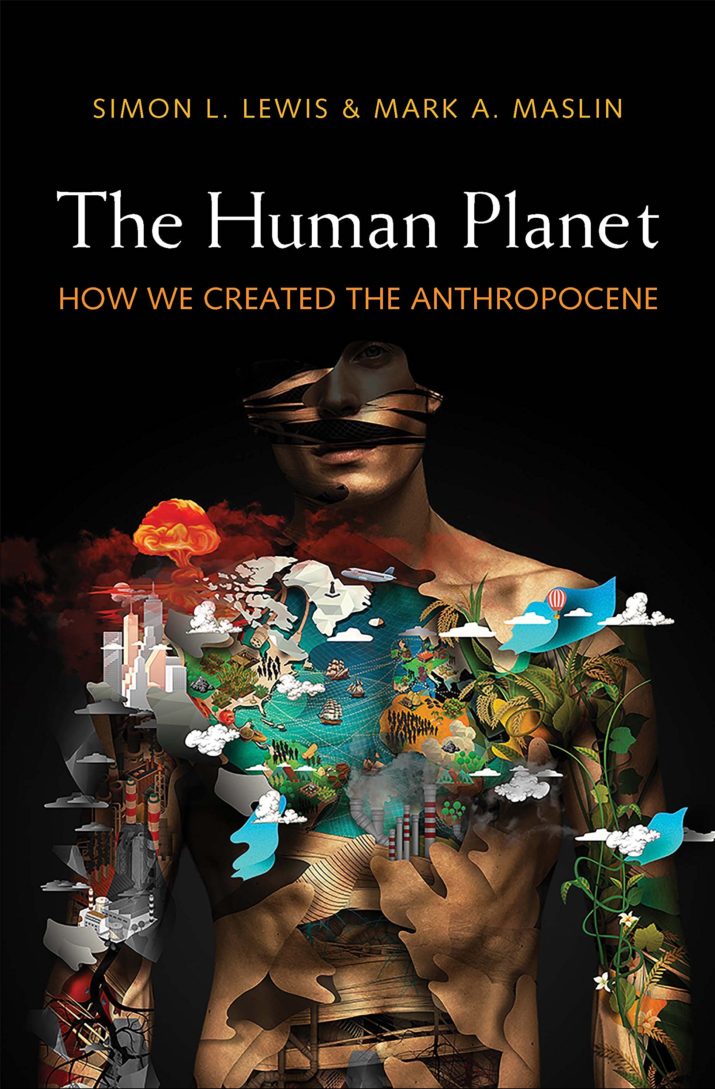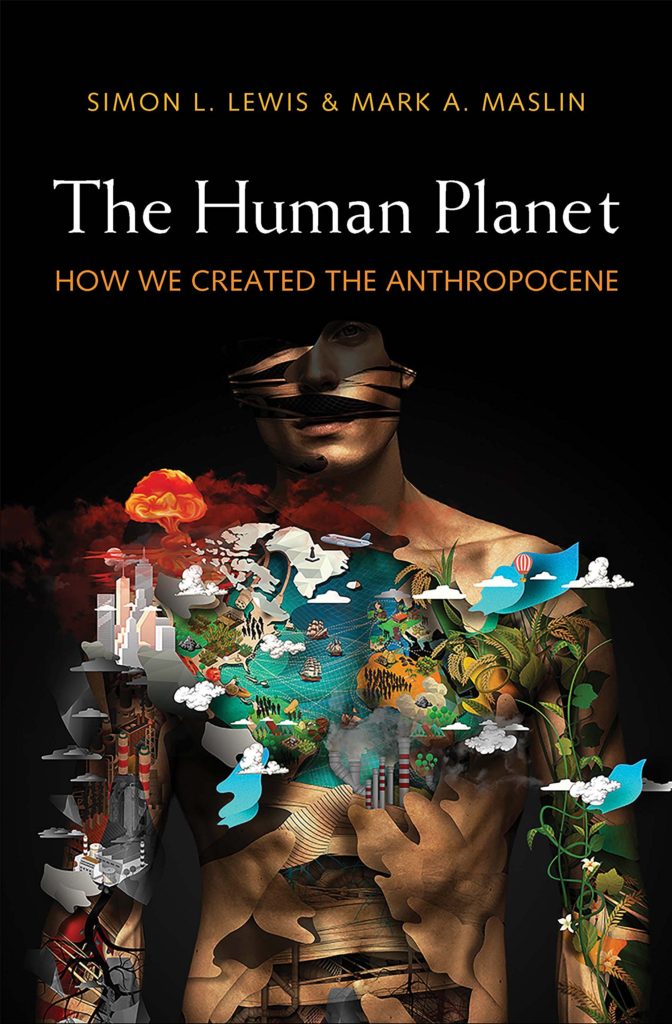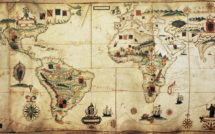

This is part of our special feature, Confronting Waste.
In their book, The Human Planet: How We Created the Anthropocene, Simon Lewis, Professor of Quaternary Science at Queen Mary University of London, and Mark Maslin, Professor of Climatology at University College London, have crafted a narrative of sweeping breadth that takes their readers from the deep geological past into the Anthropocene—a proposed geological time period that acknowledges the profound effects humans have enacted on Earth. Calling the Anthropocene one of the most “arresting ideas” (15) to arise from science in years, with graceful prose Lewis and Maslin tell the story of humans as a “geological superpower” (5).
Four themes animate the work: human-induced environmental changes; transitions in patterns of energy use and social organization; candidates for the identifiable beginning of the Anthropocene; and the future of humanity in the new epoch. Their stated purpose for investigating these themes is to “illuminate what is at stake in order to allow the crafting of humane and intelligent responses to living on our human-dominated planet” (15). To entertain Lewis’ and Maslin’s ideas is to engage their central question, “Can humans flourish on a rapidly changing planet, or is the future one of grim survival, or even our own extinction?” (5).
As an interdisciplinarily-inclined sedimentologist, I was delighted to find in The Human Planet thorough encounters with the development of the concept of geologic time intertwined with extensive explorations of the social scientific roots and implications of a newly minted Anthropocene. Quoting Rachel Carson from her National Book Award-winning The Sea Around Us, “The sediments are a sort of epic poem of the earth. When we are wise enough, perhaps we will read in them all of past history,” Lewis and Maslin dub geological sediments “natural data storage devices” that mark indelibly the Anthropocene as a new phase of geologic time (44). With this statement, the authors locate themselves firmly in the camp that acknowledges the existence of this new epoch.
At the same time, they insist on the “interlacing” of Earth and human history (9). For example, the authors advocate clearly their scientific view that a brief but substantial dip in atmospheric carbon dioxide observed in an Antarctic ice-core marks the beginning of the Anthropocene in 1610, but they also assert that widespread colonialism and slavery additionally characterize the beginning of this epoch. Few, if any, books about the Anthropocene offer this much-needed integration of geological and social scientific thought as this one. Lewis and Maslin do justice to the topic of the Anthropocene as, in their words, “a heady mix of science, politics, philosophy and religion linked to our deepest fears and utopian visions of what humanity, and the planet we live on, might become” (7). They do so by reinterpreting human history and contemporary “mega-civilization” through the lens of the Earth system—a “complex adaptive system” of physical, chemical and biological components (333).
At the outset, the authors ground their work in the most fundamental truth that emerges from geology: if compressed into one day, the entirety of Earth’s incomprehensibly long history would have the earliest humans evolving on the planet four seconds before midnight. Humans are the tiniest sliver in the 4.5 billion years of geologic time yet our actions have changed Earth to an extent comparable to other defining events in Earth’s history. Lewis’ and Maslin’s detailed account of the formulation of the geologic time scale leads the reader to recognize the depth of geologic time. They delve in deeply to discussions about the designation of past geologic periods and epochs, for example, the controversy over recognition of the Holocene. By apt articulation of this debate, Lewis and Maslin validate the scientific struggle around designation of the Anthropocene. They entertain in lucid detail competing ideas about how and where to recognize in sediments the beginning of the Anthropocene. From consideration of concepts such as golden spikes to the Great Acceleration, Lewis and Maslin document the controversies surrounding designation of the Anthropocene. Apart from neglecting to mention James Hutton, considered the founder of geology, readers will relish the lyrical account of the scientific discoveries that have led to the construction of the geologic time scale and the related current controversy. In sum, while holding the interest of geologically-minded readers, those inclined to the history of science will find much to enjoy in this well built and finely documented book.
Perhaps most compelling to an environmentally-inclined and socially-aware audience is the book’s final chapter, “Can Homo dominatus Become Wise?” Lewis and Maslin attribute most of our past and current conundrums to the “progress trap” of fossil fuel use and concomitant climate change (378). But they also include in this vexing picture the substantially troubling issue that life in the Anthropocene foregrounds: global inequality. To their credit, this book—so based in geology—also includes, for example, explorations of gender inequity and income disparity.
Anticipating the question, “What are we to do?” Lewis and Maslin postulate three possible futures in the Anthropocene: ongoing development of consumer capitalism, collapse, or innovation towards a new mode of living. The first is unsustainable, the second undesirable, and therefore the third is our only option for a viable future. In attempting to answer the question, Lewis and Maslin introduce provocative concepts such as Universal Basic Income, a policy whereby a financial payment, set at a level above which subsistence needs are met and covering healthcare insurance in countries that do not already provide this for free, is made to every person without any obligation to work, and Half-Earth and associated “rewilding,” an idea originated by celebrated biologist E.O. Wilson that we allocate half the Earth’s surface primarily for the benefit of other species. Lewis and Maslin admit that these proposals are “anathema to almost all contemporary mainstream economic and political thinking” (412). Nonetheless, I embrace their provocation for it makes room within geological considerations of the Anthropocene to “apply[ing] ourselves to minimize human suffering and the loss of species by making every effort to limit the coming chaos under rapid climate change” (414). I believe other readers will welcome it as well.
Reviewed by Jill S. Schneiderman, Vassar College
The Human Planet: How We Created the Anthropocene
By Simon L. Lewis and Mark A. Maslin
Publisher: Yale University Press
Hardcover/ 465 pages/ 2018
ISBN: 9780300232172
To read more book reviews click here
Published on May 7, 2019.
Click here for our special feature, Facing the Anthropocene.




